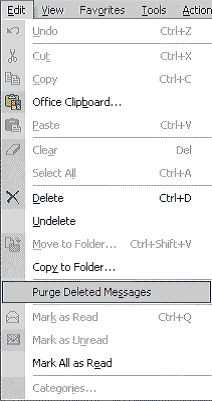
|
Services |
|
|
Web Hosting |
||
|
IMAP (Internet Message Access Protocol) IMAP was recently developed for users who needed access to their email on the server without having to download the mail to a local machine. Users can manipulate mail and folders on the server side. Folders and mailboxes can also be given shared access for uses such as announcements and common projects. WebMail is a great example of the IMAP protocol although it is accessed through the web and not an email client such as Microsoft Outlook or Eudora. Preferred IMAP settings To do this, click on “Edit” then “Purge Deleted Messages”. IMAP Advantages
WebMail (IMAP Protocol) WebMail is a multi-featured, customizable, browser independent
email system. Some of WebMail's many features include: contact list,
daily schedule, to do list, spell checker and web bookmarks. Logging in to your account Your WebMail username is your email address. In other words, your username is your mail account username plus your domain name in the form of: mailaccountusername@yourname.com. For example, if your mail account username is "bob" and your domain name is "carsales.com," your WebMail username is: bob@carsales.com. To log in to WebMail, enter your WebMail username in the username field of the login page. Enter your email password in the password field. Click the "Log in" button to start the authentication process. Your password is not displayed for security purposes. If your user information is incorrect, the login page will be re-displayed.
POP email is designed to be used by one client and one computer where as IMAP is designed to be used by various users using different computers. IMAP stores mail on email servers whereas POP stores email on a client’s computer POP clients have facilities for organizing mail into folders on the clients computer where when using IMAP, folders can be on the server or client side. POP sends messages one way, from the server to the client. IMAP can copy and move messages back and forth between mailboxes on multiple accounts as well as between servers and clients. Pop email only supports one user to access one mailbox. IMAP mail allows users to access multiple public and private folders where users can change the status of message to share for multiple viewing. |
||
 |
||
©
2004 Hybeam, Inc. All rights reserved. All registered Trademarks and Tradenames are the property of their respective owners. Please review our Acceptable Use Policy and Terms & Conditions |
||
